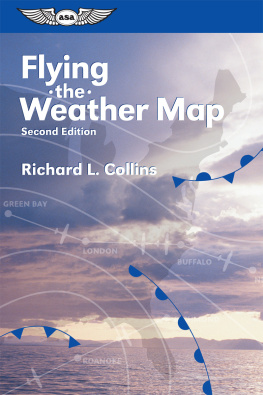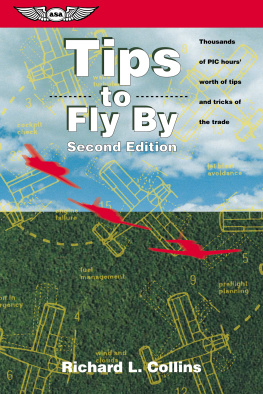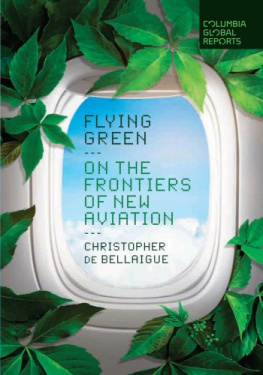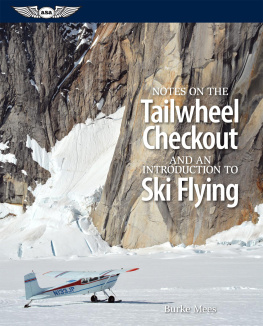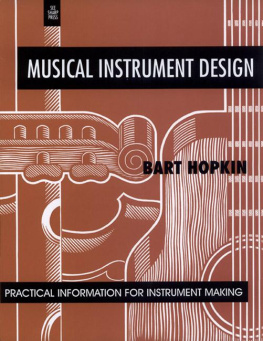Also by Richard Collins
Flying Safely
Flying the Weather Map
Tips to Fly By
Thunderstorms and Airplanes
Instrument Flying Refresher (with Patrick Bradley)
Flight Level Flying
Air Crashes
The Perfect Flight
Pilot Upgrade (with Patrick Bradley)
Mastering the Systems
The Next Hour
Flying IFR
Fifth Edition
by Richard L. Collins
Aviation Supplies & Academics, Inc.
7005 132nd Place SE
Newcastle, Washington 98059-3153
2014 by Richard L. Collins
All rights reserved. This book, or any portions thereof, may not be reproduced in any form without written permission of the publisher.
Cover photo: Cirrus Aircraft, used with permission.
ASA-FLY-IFR-5-EB
ISBN 978-1-61954-201-3
Preface
to the Fifth Edition
This book was originally written in 1978 and has been revised several times since. In revisiting the subject in 2014 I was amazed how much some things have changed and how little other things have changed.
The biggest change has been in the instrument panel. I was recently sitting in the cockpit of a new Cirrus and the sight, first of two big blank screens and then of two colorfully filled screens, made me think back to the panel of the airplane that I was flying when I first wrote this book. By comparison, it was pretty crude. Granted, the old panel provided everything that I needed to fly instruments, but the new panel provides so much more. It also appears to be, and is, more challenging.
How much more information is on the new panel directly relates to a thought I have always had on the subject at hand: all instrument flying is IFR flying but not all IFR flying is instrument flying. If you look at flight tracking software on a good VFR day there are a lot of general aviation aircraft in the IFR system. On a scuzzy day there are far fewer GA airplanes out there working the system.
This rather defines the task. The written test and flight training concentrate mainly on IFR flying. The rules have to be learned, the charts have to be read whether electronically or on old-fashioned paper, and the theory and mechanics of this type flying have to be explored.
The finery on the instrument panel is what the pilot uses to operate in the air traffic control system and to gather information about weather, terrain and other traffic. It also contains the information that pilots of old got from the six-pack of mechanical instruments. It is mainly a more cohesive presentation of information but it is also a lot prettier.
Because no cloud-flying is required to get an instrument rating, a pilot might have no real experience when first rated. Thus it will take a while to become a true instrument pilot and use all the good stuff in actual weather.
I would be the last person to knock test prep courses because I have worked on them and always tried to add a little realism here and there. But the fact is the pilots who buy test prep courses do so with but one goal: to pass the knowledge test.
I did not write this book to help pilots get an instrument rating. No effort was made to cover everything on the instrument and flight test. It was written to help pilots learn to use an instrument rating with as little risk as possible, whether flying with the latest equipment or with basic old equipment.
I started instrument flying early, in the 1950s and experienced much of what is out there. I have always shared this with other pilots in magazine article, books and video productions. I have also tried to share my enthusiasm about the pleasure that can be found in well-flown flights and the true utility that can be found when using personal airplanes to move about the country. I have also tried to share my interest in weather as it applies to our flying. I have always thought that a pilot can best learn about weather while poking around inside clouds and fronts and low-pressure systems. Success at actual instrument flying is found both in controlling and navigating the airplane and in knowing everything about what is affecting the airplane and the conditions around and ahead of it.
There is no freedom quite like that found in personal aviation, whether you use it for business or pleasure. Ill share a simplistic thought on how to succeed: always know where you are, where you are going, and how well you as a pilot are performing.
I wish you good flying and a lot of it.
Richard L. Collins
ONE
The Foundation
One of the primary tasks in instrument flying is to get priorities straight in your mind. I observed a good example of this one day as I followed another airplane on an ILS approach in VFR conditions. The pilot ahead was having a terrible timeswooping, dipping, and making what appeared to be rather mad lunges at the ILS course with his airplane. Clearly, this pilot had no business practicing ILS approaches. The effort was purely wastefulhe had the cart before the horse. From two miles behind, it was plain to see that the pilot didnt have a strong capability at basic instrument flying. He could not assimilate the data on the panel, he could not hold a heading, and he could not maintain a constant rate of descent. These problems are rather common; in these modern times, it is easy to forget the basics as we rush headlong into flight that seems related more to vast arrays of talented computers than to one person and one machine. Regardless of an airplanes sophistication, the basic ability to fly the airplane is first in importance. If you cant fly the airplane solely by reference to instruments, with a measure of precision and confidence, there is no way to utilize all the electronic wonders. Basic instrument flying is as important today as it was to Charles Lindbergh in 1927. It is top priority.
Many years ago, when the Aztec first came out, I had one around to fly for a few days. The first order of business was some simulated instrument flying under the hood, and the first thing I did was fly a VOR approach. The airplane didnt seem to want to come down quickly enough, so I put some flaps out when passing the station on the way to the airport. That was okay. On the missed approach, though, everything went wrong at the same time. I retracted the gear and then put the flap selector in the Up position. The nose on the early Aztecs becomes very heavy when the flaps are retracted; this is the reverse of what you usually find in a low-wing airplane, and it wasnt what I expected. Between reaching for the trim, pulling on the wheel, and wondering what in the devil was going on, I neglected the basic art of flying for a moment. The airplane began to go its own way. The safety pilot suggested I look up and fly visually to get things under control. It was embarrassing.
Lessons
The incident yielded more than one lesson. There was a clear message about learning something about a particular airplane before operating it on instruments. Delve into basics about trim changes with gear and flap retraction and extension, learn power settings for various phases of flight, and study the machine and its operating handbook, including all the supplements that cover items like the autopilot, for things that are different or less than obvious. I certainly should not have chosen a simulated instrument approach as the first chore in the airplane when flying it under the hood. Instead, I should have flown it around for a bit, developing a relationship between my mind, my hand, and the airplanes characteristics. Every pilot/airplane relationship starts out with the pilot a stranger to the machine, almost in the role of a passenger in the left front seat, and it evolves to the point where the pilot almost becomes a part of the machine. With the Aztec, I skipped the introduction and tried immediately to develop a complex relationship. The most important lesson is to heed messages from any such evidences of problems with basic instrument flying. Be a perfectionist about it. If you cant do an excellent job under the hood, the situation is surely not going to get any better in cloud.


